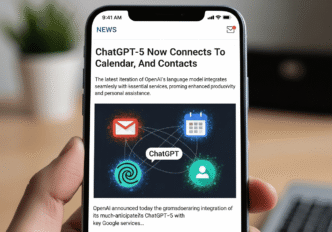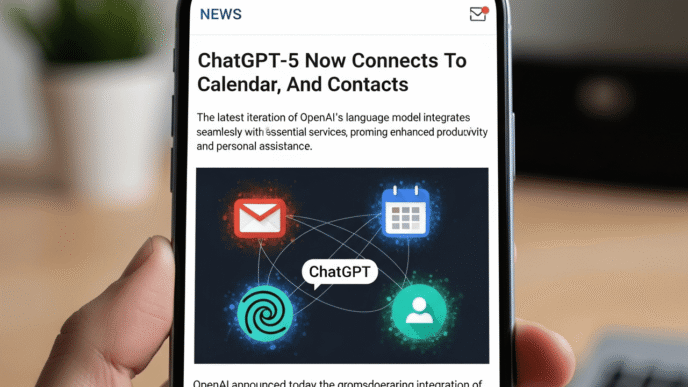Surge in unverified crawler activity and sophisticated impersonation attacks prompts urgent calls for enhanced verification protocols as malicious actors exploit trust in search engine bots
By [News Reporter] | August 16, 2025
Website administrators worldwide are reporting alarming increases in mysterious crawler activity claiming to originate from Google, sparking widespread security concerns as experts warn that sophisticated impersonation attacks are becoming increasingly difficult to detect and potentially devastating for website operators.
Recent investigations reveal that over 16.3% of websites suffer from some form of Googlebot impersonation attacks, with malicious actors leveraging the trusted reputation of Google’s crawlers to bypass security measures, steal content, and launch sophisticated cyber attacks that can overwhelm servers and compromise sensitive data.
Table of Contents
Toggle
The Growing Threat of Fake Googlebots
Security researchers have documented a dramatic escalation in fake Googlebot activity, with some studies revealing that 34.3% of all identified impersonators engage in explicitly malicious activities, including distributed denial-of-service (DDoS) attacks, content theft, and spam injection.
The threat has reached such proportions that DataDome, a leading bot detection service, reports identifying “more than one million hits per day coming from fake Googlebots” across their customer websites. This represents a staggering volume of malicious activity masquerading as legitimate search engine crawling.
Key Statistics Paint an Alarming Picture:
- Over 23% of Googlebot impersonators are used specifically for DDoS attacks
- Fake Googlebots have become the third most common type of DDoS bot
- Malicious crawler traffic has increased 18% from May 2024 to May 2025
- Security firms report processing over 50 million fake Googlebot visits in recent monitoring periods
Sophisticated Impersonation Techniques
The evolution of fake Googlebot attacks has moved far beyond simple user-agent spoofing. Modern impersonators employ increasingly sophisticated techniques that can fool even experienced website administrators:
Advanced Behavioral Mimicry: Security experts report encountering bots that “mimic Google’s crawling behavior, fetching the robots.txt first and taking a crawler-like method of browsing through the website,” making detection significantly more challenging.
IP Address Spoofing: While basic attacks simply copy Googlebot’s user agent string, sophisticated actors now attempt to route traffic through IP ranges that appear to belong to Google’s network, though proper verification can still expose these attempts.
Legitimate Service Abuse: Perhaps most concerning, researchers have documented cases where attackers actually abuse legitimate Googlebot services to deliver malicious payloads, with F5 Labs discovering crypto-mining malware delivered through real Googlebot servers exploiting vulnerabilities like the Apache Struts 2 CVE-2018-11776.
The Security Verification Crisis
The challenge of distinguishing legitimate Google crawlers from imposters has intensified as Google’s crawler ecosystem has become more complex. The search giant now operates multiple specialized crawlers, including:
- Googlebot (main search crawler)
- Google-InspectionTool (for Search Console testing)
- Google-Extended (for AI training data collection)
- Google-Safety (for malware detection)
- GoogleOther (for various Google products)
This proliferation of legitimate crawlers has created confusion among website operators and provided additional cover for malicious actors to hide their activities.
Google’s Response: Recognizing the severity of the verification problem, Google has enhanced its crawler verification processes, implementing daily IP range refreshes instead of weekly updates. As announced by Google’s Gary Illyes, this change addresses feedback from “large network operators” and provides more current information for verification purposes.
Real-World Impact and Case Studies
The consequences of fake Googlebot attacks extend far beyond simple security breaches:
Infrastructure Overload: Wikipedia reported in April 2025 that a massive surge of visits from AI crawlers—including fake ones—forced the site to spend more money and scramble to remain online for users. The University of North Carolina at Chapel Hill experienced AI crawlers driving “five times the usual number of simultaneous searches of its online library catalogue, overloading the system and triggering glitches.”
Content Theft and Spam: Legitimate websites report fake Googlebots “littering blogs with comment spam and copying website content to be published elsewhere.” SEO tools and competitor analysis services often employ Googlebot impersonation to scrape competitor information.
Economic Damage: For content-dependent businesses, the impact can be devastating. As one security expert noted: “Website operators are often challenged by harsh ‘all or nothing’ dilemmas: they can block all Googlebot agents and risk loss of traffic, or allow all Googlebots in and risk fakes and downtime.”
Geographic Distribution of Threats
Analysis of fake Googlebot attack origins reveals concerning global patterns:
Primary Sources:
- United States: 25% of fake Googlebot traffic
- China: 15% of malicious crawler activity
- Turkey: 14% of impostor attacks
- Brazil: 13.49% (emerging as a significant threat source)
- India: Consistent presence in top threat origins
These attacks typically originate from botnets—clusters of compromised devices including Trojan-infected personal computers—that are exploited for various malicious purposes beyond simple impersonation.
The Technical Challenge of Detection
Detecting fake Googlebots requires sophisticated verification techniques that many website operators lack the resources to implement effectively:
Basic Verification Methods:
- User Agent Analysis: Checking for typos and inconsistencies in claimed Googlebot user agent strings
- IP Range Verification: Comparing crawler IP addresses against Google’s published IP ranges
- Reverse DNS Lookup: Verifying that IP addresses resolve to genuine Google domains
Advanced Detection Requirements:
- Real-time behavioral analysis
- Traffic pattern recognition
- Cross-referencing multiple verification points
- Machine learning algorithms for anomaly detection
As security researchers note: “Because malicious bots can fake the UA strings of legitimate ones, you need a decent bot detection system to sort the good players out from the bad ones.”
Industry Response and Solutions
The cybersecurity industry has responded to the fake Googlebot crisis with increasingly sophisticated detection and prevention tools:
Enterprise Solutions: Companies like DataDome employ “three layers of detection, each increasing in complexity, executed in real time, thanks to the power of machine learning algorithms” to identify imposters.
Load Balancer Integration: HAProxy Enterprise has introduced crawler verification capabilities that automatically validate bot authenticity, storing client IP addresses and status to remember legitimate crawlers for future visits.
Behavioral Analysis: Modern bot detection systems analyze traffic patterns, request frequency, and crawling behavior to identify suspicious activity that deviates from legitimate Googlebot patterns.
The Broader AI Crawler Explosion
The fake Googlebot problem exists within a broader explosion of AI-powered crawling activity that has complicated the security landscape:
AI Crawler Growth: From May 2024 to May 2025, AI crawler traffic rose 18%, with GPTBot growing 305% and legitimate Googlebot traffic increasing 96%. This surge has created additional cover for malicious actors and increased the overall complexity of bot traffic management.
New Player Dynamics: The AI crawler landscape has seen significant shifts, with GPTBot emerging as the dominant force at 30% share, while Meta-ExternalAgent entered at 19%, creating new patterns that security systems must learn to recognize.
Editorial Analysis: The Trust Economy Under Attack
The fake Googlebot crisis represents a fundamental attack on the trust economy that underlies the modern web. For over two decades, the relationship between search engines and websites has been built on mutual benefit: search engines provide traffic in exchange for content access, with clear protocols governing the interaction.
The VIP Problem: As security experts note, “Google ID is as close as a bot can get to having a VIP backstage pass for every show in town.” This privileged access, essential for legitimate search engine operation, creates an irresistible target for malicious actors seeking to exploit the same trust relationships.
The Verification Dilemma: The complexity of modern crawler ecosystems has created a fundamental asymmetry: while sophisticated attackers can employ multiple layers of deception, most website operators lack the technical resources to implement correspondingly sophisticated verification systems.
Economic Warfare: The use of fake Googlebots for DDoS attacks represents a particularly insidious form of economic warfare, forcing website operators into “all or nothing” decisions that can be devastating regardless of which option they choose.
Technical Recommendations for Website Operators
Security experts recommend a multi-layered approach to fake Googlebot detection and prevention:
Immediate Actions:
- Implement reverse DNS verification for all claimed Googlebot traffic
- Cross-reference crawler IP addresses against Google’s daily-updated IP range lists
- Monitor traffic patterns for anomalies inconsistent with legitimate crawling behavior
- Deploy rate limiting specifically calibrated for known Googlebot patterns
Advanced Protections:
- Invest in enterprise-grade bot detection services with machine learning capabilities
- Implement behavioral analysis to identify suspicious crawling patterns
- Use multi-factor verification combining IP, user agent, and behavioral analysis
- Deploy real-time cluster-wide tracking to identify coordinated attacks
Ongoing Monitoring:
- Regularly review server logs for unusual crawler activity
- Track bandwidth consumption patterns associated with claimed Googlebot traffic
- Monitor for content theft or unauthorized access following crawler visits
- Maintain updated blacklists of known malicious IP ranges
The Future of Web Crawler Security
Several trends will shape the future of crawler security and verification:
Enhanced Verification Protocols: Google’s move to daily IP range updates represents just the beginning of more sophisticated verification systems that may eventually include cryptographic authentication for legitimate crawlers.
AI-Powered Detection: The same artificial intelligence technologies driving the crawler explosion will increasingly be deployed for detection and prevention, creating an arms race between attackers and defenders.
Industry Standards: The cybersecurity industry is moving toward standardized protocols for crawler verification that could reduce the current fragmentation and confusion in the space.
Regulatory Response: As the economic impact of fake crawler attacks grows, regulatory bodies may eventually mandate specific security standards for bot traffic management.
Looking Ahead: An Escalating Arms Race
The fake Googlebot crisis shows no signs of abating. As one security researcher noted, “Seventeen years after the opportunity for abuse was made public, attackers are finding new ways to make use of this unpatched web crawler service.”
The fundamental challenge remains that while legitimate crawlers must identify themselves to serve their purpose, this same identification creates opportunities for impersonation that sophisticated attackers continue to exploit.
The Bottom Line: The mystery Google crawler problem represents more than a technical security issue—it’s a fundamental challenge to the trust relationships that enable the modern web to function. As the line between legitimate and malicious crawler activity becomes increasingly blurred, website operators must invest in sophisticated detection capabilities or risk becoming victims of an escalating cyber conflict.
For website administrators, the message is clear: not every crawler claiming to be Googlebot actually is Googlebot, and the cost of failing to distinguish between friends and foes has never been higher. The web’s future may depend on how successfully the industry can solve the crawler verification challenge while preserving the open access that makes the internet valuable in the first place.
Sources and External Links:
- Imperva: Fake Googlebot Impersonators Analysis
- Google’s Enhanced Crawler Verification Processes
- Cloudflare: From Googlebot to GPTBot – Who’s Crawling Your Site in 2025
- DataDome: How to Stop Fake Googlebots From Stealing Your Content
- Human Security: The Ultimate List of Crawlers and Known Bots for 2025
- F5 Labs: Abusing Googlebot Services to Deliver Crypto-Mining Malware
- Search Engine Journal: Google Warns – Beware Of Fake Googlebot Traffic
- Google Developers: Googlebot and Other Google Crawler Verification
- Washington Post: How AI Bots Are Threatening Your Favorite Websites
This report synthesizes data from multiple cybersecurity firms, academic institutions, and industry analyses documenting the growing threat of fake Google crawlers and sophisticated bot impersonation attacks.

![# Mystery Google Crawlers Spark Security Concerns as Unidentified Bots Hit Websites *Surge in unverified crawler activity and sophisticated impersonation attacks prompts urgent calls for enhanced verification protocols as malicious actors exploit trust in search engine bots* **By [News Reporter] | August 16, 2025** Website administrators worldwide are reporting alarming increases in mysterious crawler activity claiming to originate from Google, sparking widespread security concerns as experts warn that sophisticated impersonation attacks are becoming increasingly difficult to detect and potentially devastating for website operators. Recent investigations reveal that over 16.3% of websites suffer from some form of Googlebot impersonation attacks, with malicious actors leveraging the trusted reputation of Google's crawlers to bypass security measures, steal content, and launch sophisticated cyber attacks that can overwhelm servers and compromise sensitive data. ## The Growing Threat of Fake Googlebots **Security researchers have documented a dramatic escalation** in fake Googlebot activity, with some studies revealing that 34.3% of all identified impersonators engage in explicitly malicious activities, including distributed denial-of-service (DDoS) attacks, content theft, and spam injection. The threat has reached such proportions that DataDome, a leading bot detection service, reports identifying "more than one million hits per day coming from fake Googlebots" across their customer websites. This represents a staggering volume of malicious activity masquerading as legitimate search engine crawling. **Key Statistics Paint an Alarming Picture:** - Over 23% of Googlebot impersonators are used specifically for DDoS attacks - Fake Googlebots have become the third most common type of DDoS bot - Malicious crawler traffic has increased 18% from May 2024 to May 2025 - Security firms report processing over 50 million fake Googlebot visits in recent monitoring periods ## Sophisticated Impersonation Techniques The evolution of fake Googlebot attacks has moved far beyond simple user-agent spoofing. Modern impersonators employ increasingly sophisticated techniques that can fool even experienced website administrators: **Advanced Behavioral Mimicry**: Security experts report encountering bots that "mimic Google's crawling behavior, fetching the robots.txt first and taking a crawler-like method of browsing through the website," making detection significantly more challenging. **IP Address Spoofing**: While basic attacks simply copy Googlebot's user agent string, sophisticated actors now attempt to route traffic through IP ranges that appear to belong to Google's network, though proper verification can still expose these attempts. **Legitimate Service Abuse**: Perhaps most concerning, researchers have documented cases where attackers actually abuse legitimate Googlebot services to deliver malicious payloads, with F5 Labs discovering crypto-mining malware delivered through real Googlebot servers exploiting vulnerabilities like the Apache Struts 2 CVE-2018-11776. ## The Security Verification Crisis The challenge of distinguishing legitimate Google crawlers from imposters has intensified as Google's crawler ecosystem has become more complex. The search giant now operates multiple specialized crawlers, including: - **Googlebot** (main search crawler) - **Google-InspectionTool** (for Search Console testing) - **Google-Extended** (for AI training data collection) - **Google-Safety** (for malware detection) - **GoogleOther** (for various Google products) This proliferation of legitimate crawlers has created confusion among website operators and provided additional cover for malicious actors to hide their activities. **Google's Response**: Recognizing the severity of the verification problem, Google has enhanced its crawler verification processes, implementing daily IP range refreshes instead of weekly updates. As announced by Google's Gary Illyes, this change addresses feedback from "large network operators" and provides more current information for verification purposes. ## Real-World Impact and Case Studies The consequences of fake Googlebot attacks extend far beyond simple security breaches: **Infrastructure Overload**: Wikipedia reported in April 2025 that a massive surge of visits from AI crawlers—including fake ones—forced the site to spend more money and scramble to remain online for users. The University of North Carolina at Chapel Hill experienced AI crawlers driving "five times the usual number of simultaneous searches of its online library catalogue, overloading the system and triggering glitches." **Content Theft and Spam**: Legitimate websites report fake Googlebots "littering blogs with comment spam and copying website content to be published elsewhere." SEO tools and competitor analysis services often employ Googlebot impersonation to scrape competitor information. **Economic Damage**: For content-dependent businesses, the impact can be devastating. As one security expert noted: "Website operators are often challenged by harsh 'all or nothing' dilemmas: they can block all Googlebot agents and risk loss of traffic, or allow all Googlebots in and risk fakes and downtime." ## Geographic Distribution of Threats Analysis of fake Googlebot attack origins reveals concerning global patterns: **Primary Sources:** - United States: 25% of fake Googlebot traffic - China: 15% of malicious crawler activity - Turkey: 14% of impostor attacks - Brazil: 13.49% (emerging as a significant threat source) - India: Consistent presence in top threat origins These attacks typically originate from botnets—clusters of compromised devices including Trojan-infected personal computers—that are exploited for various malicious purposes beyond simple impersonation. ## The Technical Challenge of Detection Detecting fake Googlebots requires sophisticated verification techniques that many website operators lack the resources to implement effectively: **Basic Verification Methods:** 1. **User Agent Analysis**: Checking for typos and inconsistencies in claimed Googlebot user agent strings 2. **IP Range Verification**: Comparing crawler IP addresses against Google's published IP ranges 3. **Reverse DNS Lookup**: Verifying that IP addresses resolve to genuine Google domains **Advanced Detection Requirements:** - Real-time behavioral analysis - Traffic pattern recognition - Cross-referencing multiple verification points - Machine learning algorithms for anomaly detection As security researchers note: "Because malicious bots can fake the UA strings of legitimate ones, you need a decent bot detection system to sort the good players out from the bad ones." ## Industry Response and Solutions The cybersecurity industry has responded to the fake Googlebot crisis with increasingly sophisticated detection and prevention tools: **Enterprise Solutions**: Companies like DataDome employ "three layers of detection, each increasing in complexity, executed in real time, thanks to the power of machine learning algorithms" to identify imposters. **Load Balancer Integration**: HAProxy Enterprise has introduced crawler verification capabilities that automatically validate bot authenticity, storing client IP addresses and status to remember legitimate crawlers for future visits. **Behavioral Analysis**: Modern bot detection systems analyze traffic patterns, request frequency, and crawling behavior to identify suspicious activity that deviates from legitimate Googlebot patterns. ## The Broader AI Crawler Explosion The fake Googlebot problem exists within a broader explosion of AI-powered crawling activity that has complicated the security landscape: **AI Crawler Growth**: From May 2024 to May 2025, AI crawler traffic rose 18%, with GPTBot growing 305% and legitimate Googlebot traffic increasing 96%. This surge has created additional cover for malicious actors and increased the overall complexity of bot traffic management. **New Player Dynamics**: The AI crawler landscape has seen significant shifts, with GPTBot emerging as the dominant force at 30% share, while Meta-ExternalAgent entered at 19%, creating new patterns that security systems must learn to recognize. ## Editorial Analysis: The Trust Economy Under Attack The fake Googlebot crisis represents a fundamental attack on the trust economy that underlies the modern web. For over two decades, the relationship between search engines and websites has been built on mutual benefit: search engines provide traffic in exchange for content access, with clear protocols governing the interaction. **The VIP Problem**: As security experts note, "Google ID is as close as a bot can get to having a VIP backstage pass for every show in town." This privileged access, essential for legitimate search engine operation, creates an irresistible target for malicious actors seeking to exploit the same trust relationships. **The Verification Dilemma**: The complexity of modern crawler ecosystems has created a fundamental asymmetry: while sophisticated attackers can employ multiple layers of deception, most website operators lack the technical resources to implement correspondingly sophisticated verification systems. **Economic Warfare**: The use of fake Googlebots for DDoS attacks represents a particularly insidious form of economic warfare, forcing website operators into "all or nothing" decisions that can be devastating regardless of which option they choose. ## Technical Recommendations for Website Operators Security experts recommend a multi-layered approach to fake Googlebot detection and prevention: **Immediate Actions:** - Implement reverse DNS verification for all claimed Googlebot traffic - Cross-reference crawler IP addresses against Google's daily-updated IP range lists - Monitor traffic patterns for anomalies inconsistent with legitimate crawling behavior - Deploy rate limiting specifically calibrated for known Googlebot patterns **Advanced Protections:** - Invest in enterprise-grade bot detection services with machine learning capabilities - Implement behavioral analysis to identify suspicious crawling patterns - Use multi-factor verification combining IP, user agent, and behavioral analysis - Deploy real-time cluster-wide tracking to identify coordinated attacks **Ongoing Monitoring:** - Regularly review server logs for unusual crawler activity - Track bandwidth consumption patterns associated with claimed Googlebot traffic - Monitor for content theft or unauthorized access following crawler visits - Maintain updated blacklists of known malicious IP ranges ## The Future of Web Crawler Security Several trends will shape the future of crawler security and verification: **Enhanced Verification Protocols**: Google's move to daily IP range updates represents just the beginning of more sophisticated verification systems that may eventually include cryptographic authentication for legitimate crawlers. **AI-Powered Detection**: The same artificial intelligence technologies driving the crawler explosion will increasingly be deployed for detection and prevention, creating an arms race between attackers and defenders. **Industry Standards**: The cybersecurity industry is moving toward standardized protocols for crawler verification that could reduce the current fragmentation and confusion in the space. **Regulatory Response**: As the economic impact of fake crawler attacks grows, regulatory bodies may eventually mandate specific security standards for bot traffic management. ## Looking Ahead: An Escalating Arms Race The fake Googlebot crisis shows no signs of abating. As one security researcher noted, "Seventeen years after the opportunity for abuse was made public, attackers are finding new ways to make use of this unpatched web crawler service." The fundamental challenge remains that while legitimate crawlers must identify themselves to serve their purpose, this same identification creates opportunities for impersonation that sophisticated attackers continue to exploit. **The Bottom Line**: The mystery Google crawler problem represents more than a technical security issue—it's a fundamental challenge to the trust relationships that enable the modern web to function. As the line between legitimate and malicious crawler activity becomes increasingly blurred, website operators must invest in sophisticated detection capabilities or risk becoming victims of an escalating cyber conflict. For website administrators, the message is clear: not every crawler claiming to be Googlebot actually is Googlebot, and the cost of failing to distinguish between friends and foes has never been higher. The web's future may depend on how successfully the industry can solve the crawler verification challenge while preserving the open access that makes the internet valuable in the first place. --- **Sources and External Links:** - [Imperva: Fake Googlebot Impersonators Analysis](https://www.imperva.com/blog/was-that-really-a-google-bot-crawling-my-site/) - [Google's Enhanced Crawler Verification Processes](https://ppc.land/google-updates-crawler-verification-processes-with-daily-ip-range-refreshes/) - [Cloudflare: From Googlebot to GPTBot - Who's Crawling Your Site in 2025](https://blog.cloudflare.com/from-googlebot-to-gptbot-whos-crawling-your-site-in-2025/) - [DataDome: How to Stop Fake Googlebots From Stealing Your Content](https://datadome.co/learning-center/scrapers-bad-bots-steal-content/) - [Human Security: The Ultimate List of Crawlers and Known Bots for 2025](https://www.humansecurity.com/learn/blog/crawlers-list-known-bots-guide/) - [F5 Labs: Abusing Googlebot Services to Deliver Crypto-Mining Malware](https://www.f5.com/labs/articles/threat-intelligence/abusing-googlebot-services-to-deliver-crypto-mining-malware) - [Search Engine Journal: Google Warns - Beware Of Fake Googlebot Traffic](https://www.searchenginejournal.com/google-warns-beware-of-fake-googlebot-traffic/535462/) - [Google Developers: Googlebot and Other Google Crawler Verification](https://developers.google.com/search/docs/crawling-indexing/verifying-googlebot) - [Washington Post: How AI Bots Are Threatening Your Favorite Websites](https://www.washingtonpost.com/technology/2025/07/01/ai-crawlers-reddit-wikipedia-fight/) *This report synthesizes data from multiple cybersecurity firms, academic institutions, and industry analyses documenting the growing threat of fake Google crawlers and sophisticated bot impersonation attacks.](https://seoprojournal.com/wp-content/uploads/2025/08/Google_AI_Studio_2025-08-15T19_23_55.598Z-332x232.png)
![# Mystery Google Crawlers Spark Security Concerns as Unidentified Bots Hit Websites *Surge in unverified crawler activity and sophisticated impersonation attacks prompts urgent calls for enhanced verification protocols as malicious actors exploit trust in search engine bots* **By [News Reporter] | August 16, 2025** Website administrators worldwide are reporting alarming increases in mysterious crawler activity claiming to originate from Google, sparking widespread security concerns as experts warn that sophisticated impersonation attacks are becoming increasingly difficult to detect and potentially devastating for website operators. Recent investigations reveal that over 16.3% of websites suffer from some form of Googlebot impersonation attacks, with malicious actors leveraging the trusted reputation of Google's crawlers to bypass security measures, steal content, and launch sophisticated cyber attacks that can overwhelm servers and compromise sensitive data. ## The Growing Threat of Fake Googlebots **Security researchers have documented a dramatic escalation** in fake Googlebot activity, with some studies revealing that 34.3% of all identified impersonators engage in explicitly malicious activities, including distributed denial-of-service (DDoS) attacks, content theft, and spam injection. The threat has reached such proportions that DataDome, a leading bot detection service, reports identifying "more than one million hits per day coming from fake Googlebots" across their customer websites. This represents a staggering volume of malicious activity masquerading as legitimate search engine crawling. **Key Statistics Paint an Alarming Picture:** - Over 23% of Googlebot impersonators are used specifically for DDoS attacks - Fake Googlebots have become the third most common type of DDoS bot - Malicious crawler traffic has increased 18% from May 2024 to May 2025 - Security firms report processing over 50 million fake Googlebot visits in recent monitoring periods ## Sophisticated Impersonation Techniques The evolution of fake Googlebot attacks has moved far beyond simple user-agent spoofing. Modern impersonators employ increasingly sophisticated techniques that can fool even experienced website administrators: **Advanced Behavioral Mimicry**: Security experts report encountering bots that "mimic Google's crawling behavior, fetching the robots.txt first and taking a crawler-like method of browsing through the website," making detection significantly more challenging. **IP Address Spoofing**: While basic attacks simply copy Googlebot's user agent string, sophisticated actors now attempt to route traffic through IP ranges that appear to belong to Google's network, though proper verification can still expose these attempts. **Legitimate Service Abuse**: Perhaps most concerning, researchers have documented cases where attackers actually abuse legitimate Googlebot services to deliver malicious payloads, with F5 Labs discovering crypto-mining malware delivered through real Googlebot servers exploiting vulnerabilities like the Apache Struts 2 CVE-2018-11776. ## The Security Verification Crisis The challenge of distinguishing legitimate Google crawlers from imposters has intensified as Google's crawler ecosystem has become more complex. The search giant now operates multiple specialized crawlers, including: - **Googlebot** (main search crawler) - **Google-InspectionTool** (for Search Console testing) - **Google-Extended** (for AI training data collection) - **Google-Safety** (for malware detection) - **GoogleOther** (for various Google products) This proliferation of legitimate crawlers has created confusion among website operators and provided additional cover for malicious actors to hide their activities. **Google's Response**: Recognizing the severity of the verification problem, Google has enhanced its crawler verification processes, implementing daily IP range refreshes instead of weekly updates. As announced by Google's Gary Illyes, this change addresses feedback from "large network operators" and provides more current information for verification purposes. ## Real-World Impact and Case Studies The consequences of fake Googlebot attacks extend far beyond simple security breaches: **Infrastructure Overload**: Wikipedia reported in April 2025 that a massive surge of visits from AI crawlers—including fake ones—forced the site to spend more money and scramble to remain online for users. The University of North Carolina at Chapel Hill experienced AI crawlers driving "five times the usual number of simultaneous searches of its online library catalogue, overloading the system and triggering glitches." **Content Theft and Spam**: Legitimate websites report fake Googlebots "littering blogs with comment spam and copying website content to be published elsewhere." SEO tools and competitor analysis services often employ Googlebot impersonation to scrape competitor information. **Economic Damage**: For content-dependent businesses, the impact can be devastating. As one security expert noted: "Website operators are often challenged by harsh 'all or nothing' dilemmas: they can block all Googlebot agents and risk loss of traffic, or allow all Googlebots in and risk fakes and downtime." ## Geographic Distribution of Threats Analysis of fake Googlebot attack origins reveals concerning global patterns: **Primary Sources:** - United States: 25% of fake Googlebot traffic - China: 15% of malicious crawler activity - Turkey: 14% of impostor attacks - Brazil: 13.49% (emerging as a significant threat source) - India: Consistent presence in top threat origins These attacks typically originate from botnets—clusters of compromised devices including Trojan-infected personal computers—that are exploited for various malicious purposes beyond simple impersonation. ## The Technical Challenge of Detection Detecting fake Googlebots requires sophisticated verification techniques that many website operators lack the resources to implement effectively: **Basic Verification Methods:** 1. **User Agent Analysis**: Checking for typos and inconsistencies in claimed Googlebot user agent strings 2. **IP Range Verification**: Comparing crawler IP addresses against Google's published IP ranges 3. **Reverse DNS Lookup**: Verifying that IP addresses resolve to genuine Google domains **Advanced Detection Requirements:** - Real-time behavioral analysis - Traffic pattern recognition - Cross-referencing multiple verification points - Machine learning algorithms for anomaly detection As security researchers note: "Because malicious bots can fake the UA strings of legitimate ones, you need a decent bot detection system to sort the good players out from the bad ones." ## Industry Response and Solutions The cybersecurity industry has responded to the fake Googlebot crisis with increasingly sophisticated detection and prevention tools: **Enterprise Solutions**: Companies like DataDome employ "three layers of detection, each increasing in complexity, executed in real time, thanks to the power of machine learning algorithms" to identify imposters. **Load Balancer Integration**: HAProxy Enterprise has introduced crawler verification capabilities that automatically validate bot authenticity, storing client IP addresses and status to remember legitimate crawlers for future visits. **Behavioral Analysis**: Modern bot detection systems analyze traffic patterns, request frequency, and crawling behavior to identify suspicious activity that deviates from legitimate Googlebot patterns. ## The Broader AI Crawler Explosion The fake Googlebot problem exists within a broader explosion of AI-powered crawling activity that has complicated the security landscape: **AI Crawler Growth**: From May 2024 to May 2025, AI crawler traffic rose 18%, with GPTBot growing 305% and legitimate Googlebot traffic increasing 96%. This surge has created additional cover for malicious actors and increased the overall complexity of bot traffic management. **New Player Dynamics**: The AI crawler landscape has seen significant shifts, with GPTBot emerging as the dominant force at 30% share, while Meta-ExternalAgent entered at 19%, creating new patterns that security systems must learn to recognize. ## Editorial Analysis: The Trust Economy Under Attack The fake Googlebot crisis represents a fundamental attack on the trust economy that underlies the modern web. For over two decades, the relationship between search engines and websites has been built on mutual benefit: search engines provide traffic in exchange for content access, with clear protocols governing the interaction. **The VIP Problem**: As security experts note, "Google ID is as close as a bot can get to having a VIP backstage pass for every show in town." This privileged access, essential for legitimate search engine operation, creates an irresistible target for malicious actors seeking to exploit the same trust relationships. **The Verification Dilemma**: The complexity of modern crawler ecosystems has created a fundamental asymmetry: while sophisticated attackers can employ multiple layers of deception, most website operators lack the technical resources to implement correspondingly sophisticated verification systems. **Economic Warfare**: The use of fake Googlebots for DDoS attacks represents a particularly insidious form of economic warfare, forcing website operators into "all or nothing" decisions that can be devastating regardless of which option they choose. ## Technical Recommendations for Website Operators Security experts recommend a multi-layered approach to fake Googlebot detection and prevention: **Immediate Actions:** - Implement reverse DNS verification for all claimed Googlebot traffic - Cross-reference crawler IP addresses against Google's daily-updated IP range lists - Monitor traffic patterns for anomalies inconsistent with legitimate crawling behavior - Deploy rate limiting specifically calibrated for known Googlebot patterns **Advanced Protections:** - Invest in enterprise-grade bot detection services with machine learning capabilities - Implement behavioral analysis to identify suspicious crawling patterns - Use multi-factor verification combining IP, user agent, and behavioral analysis - Deploy real-time cluster-wide tracking to identify coordinated attacks **Ongoing Monitoring:** - Regularly review server logs for unusual crawler activity - Track bandwidth consumption patterns associated with claimed Googlebot traffic - Monitor for content theft or unauthorized access following crawler visits - Maintain updated blacklists of known malicious IP ranges ## The Future of Web Crawler Security Several trends will shape the future of crawler security and verification: **Enhanced Verification Protocols**: Google's move to daily IP range updates represents just the beginning of more sophisticated verification systems that may eventually include cryptographic authentication for legitimate crawlers. **AI-Powered Detection**: The same artificial intelligence technologies driving the crawler explosion will increasingly be deployed for detection and prevention, creating an arms race between attackers and defenders. **Industry Standards**: The cybersecurity industry is moving toward standardized protocols for crawler verification that could reduce the current fragmentation and confusion in the space. **Regulatory Response**: As the economic impact of fake crawler attacks grows, regulatory bodies may eventually mandate specific security standards for bot traffic management. ## Looking Ahead: An Escalating Arms Race The fake Googlebot crisis shows no signs of abating. As one security researcher noted, "Seventeen years after the opportunity for abuse was made public, attackers are finding new ways to make use of this unpatched web crawler service." The fundamental challenge remains that while legitimate crawlers must identify themselves to serve their purpose, this same identification creates opportunities for impersonation that sophisticated attackers continue to exploit. **The Bottom Line**: The mystery Google crawler problem represents more than a technical security issue—it's a fundamental challenge to the trust relationships that enable the modern web to function. As the line between legitimate and malicious crawler activity becomes increasingly blurred, website operators must invest in sophisticated detection capabilities or risk becoming victims of an escalating cyber conflict. For website administrators, the message is clear: not every crawler claiming to be Googlebot actually is Googlebot, and the cost of failing to distinguish between friends and foes has never been higher. The web's future may depend on how successfully the industry can solve the crawler verification challenge while preserving the open access that makes the internet valuable in the first place. --- **Sources and External Links:** - [Imperva: Fake Googlebot Impersonators Analysis](https://www.imperva.com/blog/was-that-really-a-google-bot-crawling-my-site/) - [Google's Enhanced Crawler Verification Processes](https://ppc.land/google-updates-crawler-verification-processes-with-daily-ip-range-refreshes/) - [Cloudflare: From Googlebot to GPTBot - Who's Crawling Your Site in 2025](https://blog.cloudflare.com/from-googlebot-to-gptbot-whos-crawling-your-site-in-2025/) - [DataDome: How to Stop Fake Googlebots From Stealing Your Content](https://datadome.co/learning-center/scrapers-bad-bots-steal-content/) - [Human Security: The Ultimate List of Crawlers and Known Bots for 2025](https://www.humansecurity.com/learn/blog/crawlers-list-known-bots-guide/) - [F5 Labs: Abusing Googlebot Services to Deliver Crypto-Mining Malware](https://www.f5.com/labs/articles/threat-intelligence/abusing-googlebot-services-to-deliver-crypto-mining-malware) - [Search Engine Journal: Google Warns - Beware Of Fake Googlebot Traffic](https://www.searchenginejournal.com/google-warns-beware-of-fake-googlebot-traffic/535462/) - [Google Developers: Googlebot and Other Google Crawler Verification](https://developers.google.com/search/docs/crawling-indexing/verifying-googlebot) - [Washington Post: How AI Bots Are Threatening Your Favorite Websites](https://www.washingtonpost.com/technology/2025/07/01/ai-crawlers-reddit-wikipedia-fight/) *This report synthesizes data from multiple cybersecurity firms, academic institutions, and industry analyses documenting the growing threat of fake Google crawlers and sophisticated bot impersonation attacks.](https://seoprojournal.com/wp-content/uploads/2025/08/Google_AI_Studio_2025-08-15T19_23_55.598Z-1044x731.png)











